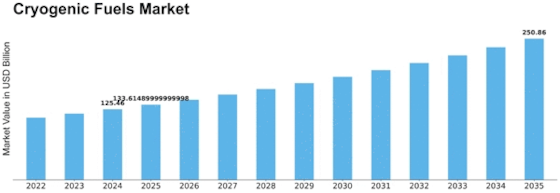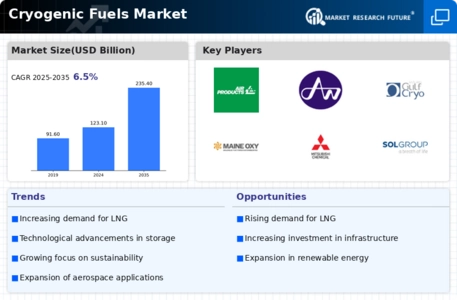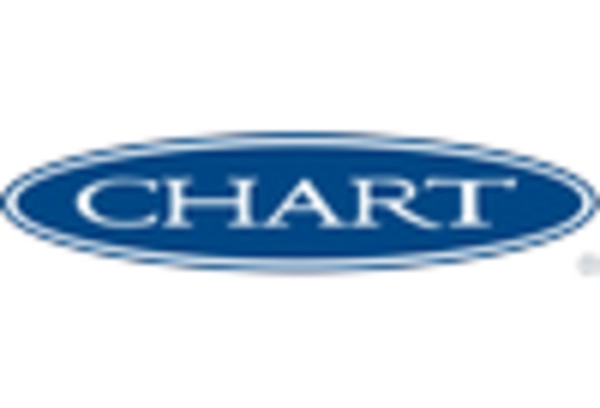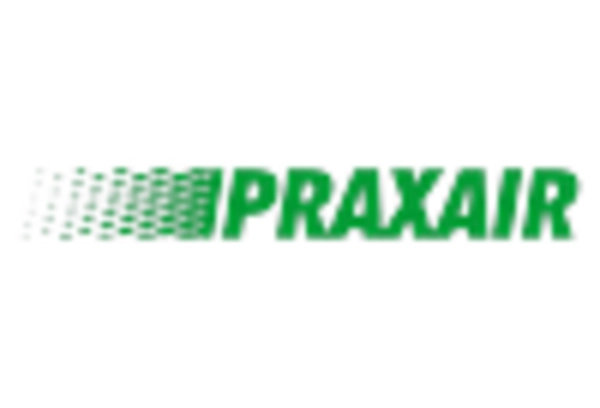-
EXECUTIVE SUMMARY
-
MARKET INTRODUCTION
-
Definition
-
Scope of the Study
- Research Objective
- Assumptions
- Limitations
-
RESEARCH METHODOLOGY
-
Overview
-
Data Mining
-
Secondary Research
-
Primary Research
- Primary Interviews
- Breakdown of Primary Respondents
-
and Information Gathering Process
-
Forecasting Model
-
Market Size Estimation
- Bottom-Up Approach
- Top-Down Approach
-
Data Triangulation
-
Validation
-
MARKET DYNAMICS
-
Overview
-
Drivers
-
Restraints
-
Opportunities
-
MARKET FACTOR ANALYSIS
-
Value Chain Analysis
-
Porter’s Five Forces Analysis
- Bargaining Power
- Threat of New Entrants
- Threat of Substitutes
- Intensity of Rivalry
-
of Suppliers
-
5.2.2.
-
Bargaining Power of Buyers
-
COVID-19 Impact Analysis
- Market Impact Analysis
- Regional Impact
- Opportunity and
-
Threat Analysis
-
6.
-
GLOBAL CRYOGENIC FUELS MARKET, BY TYPE
-
Overview
-
Liquid Nitrogen
-
Liquid Air
-
Liquid Helium
-
Liquid Neon
-
Liquid Hydrogen
-
GLOBAL CRYOGENIC FUELS MARKET, BY END USER
-
Overview
-
Energy
-
Manufacturing
-
Aerospace
-
Biomedical &
-
Healthcare
-
7.6.
-
Chemical
-
7.7.
-
Others
-
GLOBAL
-
CRYOGENIC FUELS MARKET, BY REGION
-
Overview
-
North America
- US
- Italy
- Spain
- Rest of Europe
-
8.2.2.
-
Canada
-
8.3.
-
Europe
-
8.3.1.
-
Germany
-
8.3.2.
-
France
-
8.3.3.
-
UK
-
Asia-Pacific
- China
- India
- Japan
- South Korea
- Australia
- Rest of Asia-Pacific
-
Rest of the World
- Middle East
- Africa
- Latin America
-
COMPETITIVE LANDSCAPE
-
Overview
-
Competitive Analysis
-
Market Share Analysis
-
Major Growth Strategy
-
in the Global Cryogenic Fuels Market,
-
Competitive Benchmarking
-
Leading Players in Terms of Number of Developments
-
in the Global Cryogenic Fuels Market,
-
Key developments and Growth Strategies
- New Type Launch/Service
- Joint Ventures
-
Deployment
-
9.7.2.
-
Merger & Acquisitions
-
Major Players Financial Matrix
- Sales & Operating Income, 2022
- Major Players
-
R&D Expenditure. 2022
-
COMPANY PROFILES
-
AIR LIQUIDE
- Company Overview
- Financial Overview
- Types Offered
- Key Developments
- SWOT Analysis
- Key Strategies
-
Air Products & Chemicals
- Company Overview
- Financial Overview
- Types Offered
- Key Developments
- SWOT Analysis
- Key Strategies
-
Air Water, Inc.
- Company Overview
- Financial Overview
- Types Offered
- Key Developments
- SWOT Analysis
- Key Strategies
-
Gulf Cryo
- Company Overview
- Financial Overview
- Types Offered
- Key Developments
- SWOT Analysis
- Key Strategies
-
Maine Oxy
- Company Overview
- Financial Overview
- Types Offered
- Key Developments
- SWOT Analysis
- Key Strategies
-
MESSER GROUP GMBH
- Company Overview
- Financial Overview
- Types Offered
- Key Developments
- SWOT Analysis
- Key Strategies
-
Mitsubishi Chemical
-
Holdings
-
10.7.1.
-
Company Overview
-
10.7.2.
-
Financial Overview
-
10.7.3.
-
Types Offered
-
10.7.4.
-
Key Developments
-
10.7.5.
-
SWOT Analysis
-
10.7.6.
-
Key Strategies
-
10.8.
-
Narco Inc.
-
10.8.1.
-
Company Overview
-
10.8.2.
-
Financial Overview
-
10.8.3.
-
Types Offered
-
10.8.4.
-
Key Developments
-
10.8.5.
-
SWOT Analysis
-
10.8.6.
-
Key Strategies
-
10.9.
-
Linde Plc
-
10.9.1.
-
Company Overview
-
10.9.2.
-
Financial Overview
-
10.9.3.
-
Types Offered
-
10.9.4.
-
Key Developments
-
10.9.5.
-
SWOT Analysis
-
10.9.6.
-
Key Strategies
-
10.10.
-
SOL Group
-
10.10.1.
-
Company Overview
-
10.10.2.
-
Financial Overview
-
10.10.3.
-
Types Offered
-
10.10.4.
-
Key Developments
-
10.10.5.
-
SWOT Analysis
-
10.10.6.
-
Key Strategies
-
11.
-
APPENDIX
-
11.1.
-
References
-
11.2.
-
Related Reports
-
-
LIST OF TABLES
-
GLOBAL CRYOGENIC
-
FUELS MARKET, SYNOPSIS, 2018-2032
-
GLOBAL CRYOGENIC FUELS MARKET, ESTIMATES & FORECAST, 2018-2032
-
(USD BILLION)
-
TABLE
-
GLOBAL CRYOGENIC FUELS MARKET, BY TYPE, 2018-2032 (USD BILLION)
-
GLOBAL CRYOGENIC FUELS
-
MARKET, BY END USER, 2018-2032 (USD BILLION)
-
NORTH AMERICA: CRYOGENIC FUELS MARKET, BY
-
TYPE, 2018-2032 (USD BILLION)
-
NORTH AMERICA: CRYOGENIC FUELS MARKET, BY END USER, 2018-2032
-
(USD BILLION)
-
TABLE
-
US: CRYOGENIC FUELS MARKET, BY TYPE, 2018-2032 (USD BILLION)
-
US: CRYOGENIC FUELS MARKET,
-
BY END USER, 2018-2032 (USD BILLION)
-
CANADA: CRYOGENIC FUELS MARKET, BY TYPE, 2018-2032
-
(USD BILLION)
-
TABLE
-
CANADA: CRYOGENIC FUELS MARKET, BY END USER, 2018-2032 (USD BILLION)
-
EUROPE: CRYOGENIC
-
FUELS MARKET, BY TYPE, 2018-2032 (USD BILLION)
-
EUROPE: CRYOGENIC FUELS MARKET, BY END USER,
-
GERMANY: CRYOGENIC FUELS MARKET, BY TYPE, 2018-2032 (USD BILLION)
-
GERMANY: CRYOGENIC
-
FUELS MARKET, BY END USER, 2018-2032 (USD BILLION)
-
FRANCE: CRYOGENIC FUELS MARKET, BY TYPE,
-
FRANCE: CRYOGENIC FUELS MARKET, BY END USER, 2018-2032 (USD
-
BILLION)
-
TABLE
-
ITALY: CRYOGENIC FUELS MARKET, BY TYPE, 2018-2032 (USD BILLION)
-
ITALY: CRYOGENIC FUELS
-
MARKET, BY END USER, 2018-2032 (USD BILLION)
-
SPAIN: CRYOGENIC FUELS MARKET, BY TYPE, 2018-2032
-
(USD BILLION)
-
TABLE
-
SPAIN: CRYOGENIC FUELS MARKET, BY END USER, 2018-2032 (USD BILLION)
-
UK: CRYOGENIC
-
FUELS MARKET, BY TYPE, 2018-2032 (USD BILLION)
-
UK: CRYOGENIC FUELS MARKET, BY END USER,
-
REST OF EUROPE: CRYOGENIC FUELS MARKET, BY TYPE, 2018-2032
-
(USD BILLION)
-
TABLE
-
REST OF EUROPE: CRYOGENIC FUELS MARKET, BY END USER, 2018-2032 (USD BILLION)
-
ASIA-PACIFIC:
-
CRYOGENIC FUELS MARKET, BY TYPE, 2018-2032 (USD BILLION)
-
ASIA-PACIFIC: CRYOGENIC FUELS MARKET, BY
-
END USER, 2018-2032 (USD BILLION)
-
JAPAN: CRYOGENIC FUELS MARKET, BY TYPE, 2018-2032
-
(USD BILLION)
-
TABLE
-
JAPAN: CRYOGENIC FUELS MARKET, BY END USER, 2018-2032 (USD BILLION)
-
CHINA: CRYOGENIC
-
FUELS MARKET, BY TYPE, 2018-2032 (USD BILLION)
-
CHINA: CRYOGENIC FUELS MARKET, BY END USER,
-
INDIA: CRYOGENIC FUELS MARKET, BY TYPE, 2018-2032 (USD BILLION)
-
INDIA:
-
CRYOGENIC FUELS MARKET, BY END USER, 2018-2032 (USD BILLION)
-
AUSTRALIA: CRYOGENIC FUELS MARKET, BY TYPE,
-
AUSTRALIA: CRYOGENIC FUELS MARKET, BY END USER, 2018-2032
-
(USD BILLION)
-
TABLE
-
SOUTH KOREA: CRYOGENIC FUELS MARKET, BY TYPE, 2018-2032 (USD BILLION)
-
SOUTH KOREA:
-
CRYOGENIC FUELS MARKET, BY END USER, 2018-2032 (USD BILLION)
-
REST OF ASIA-PACIFIC: CRYOGENIC FUELS MARKET,
-
BY TYPE, 2018-2032 (USD BILLION)
-
REST OF ASIA-PACIFIC: CRYOGENIC FUELS MARKET, BY END USER,
-
REST OF THE WORLD: CRYOGENIC FUELS MARKET, BY TYPE, 2018-2032
-
(USD BILLION)
-
TABLE
-
REST OF THE WORLD: CRYOGENIC FUELS MARKET, BY END USER, 2018-2032 (USD BILLION)
-
MIDDLE EAST:
-
CRYOGENIC FUELS MARKET, BY TYPE, 2018-2032 (USD BILLION)
-
MIDDLE EAST: CRYOGENIC FUELS MARKET, BY
-
END USER, 2018-2032 (USD BILLION)
-
AFRICA: CRYOGENIC FUELS MARKET, BY TYPE, 2018-2032 (USD BILLION)
-
AFRICA: CRYOGENIC
-
FUELS MARKET, BY END USER, 2018-2032 (USD BILLION)
-
LATIN AMERICA: CRYOGENIC FUELS MARKET, BY
-
TYPE, 2018-2032 (USD BILLION)
-
LATIN AMERICA: CRYOGENIC FUELS MARKET, BY END USER, 2018-2032
-
(USD BILLION)
-
LIST OF FIGURES
-
RESEARCH PROCESS
-
MARKET STRUCTURE FOR THE GLOBAL CRYOGENIC FUELS
-
MARKET
-
FIGURE
-
MARKET DYNAMICS FOR THE GLOBAL CRYOGENIC FUELS MARKET
-
GLOBAL CRYOGENIC FUELS MARKET, SHARE (%),
-
BY TYPE, 2022
-
FIGURE
-
GLOBAL CRYOGENIC FUELS MARKET, SHARE (%), BY END USER, 2022
-
GLOBAL CRYOGENIC FUELS
-
MARKET, SHARE (%), BY REGION, 2022
-
NORTH AMERICA: CRYOGENIC FUELS MARKET, SHARE (%),
-
BY REGION, 2022
-
FIGURE
-
EUROPE: CRYOGENIC FUELS MARKET, SHARE (%), BY REGION, 2022
-
ASIA-PACIFIC: CRYOGENIC FUELS MARKET, SHARE
-
(%), BY REGION, 2022
-
FIGURE
-
REST OF THE WORLD: CRYOGENIC FUELS MARKET, SHARE (%), BY REGION, 2022
-
GLOBAL CRYOGENIC
-
FUELS MARKET: COMPANY SHARE ANALYSIS, 2022 (%)
-
AIR LIQUIDE: FINANCIAL OVERVIEW SNAPSHOT
-
AIR LIQUIDE:
-
SWOT ANALYSIS
-
FIGURE
-
AIR PRODUCTS & CHEMICALS: FINANCIAL OVERVIEW SNAPSHOT
-
AIR PRODUCTS & CHEMICALS: SWOT ANALYSIS
-
AIR WATER,
-
INC.: FINANCIAL OVERVIEW SNAPSHOT
-
AIR WATER, INC.: SWOT ANALYSIS
-
GULF CRYO: FINANCIAL OVERVIEW SNAPSHOT
-
GULF CRYO:
-
SWOT ANALYSIS
-
FIGURE
-
MAINE OXY.: FINANCIAL OVERVIEW SNAPSHOT
-
MAINE OXY.: SWOT ANALYSIS
-
MESSER GROUP GMBH:
-
FINANCIAL OVERVIEW SNAPSHOT
-
MESSER GROUP GMBH: SWOT ANALYSIS
-
MITSUBISHI CHEMICAL HOLDINGS: FINANCIAL
-
OVERVIEW SNAPSHOT
-
FIGURE
-
MITSUBISHI CHEMICAL HOLDINGS: SWOT ANALYSIS
-
NARCO INC.: FINANCIAL OVERVIEW SNAPSHOT
-
NARCO INC.:
-
SWOT ANALYSIS
-
FIGURE
-
LINDE PLC: FINANCIAL OVERVIEW SNAPSHOT
-
LINDE PLC: SWOT ANALYSIS
-
SOL GROUP: FINANCIAL
-
OVERVIEW SNAPSHOT
-
FIGURE
-
SOL GROUP: SWOT ANALYSIS










Leave a Comment